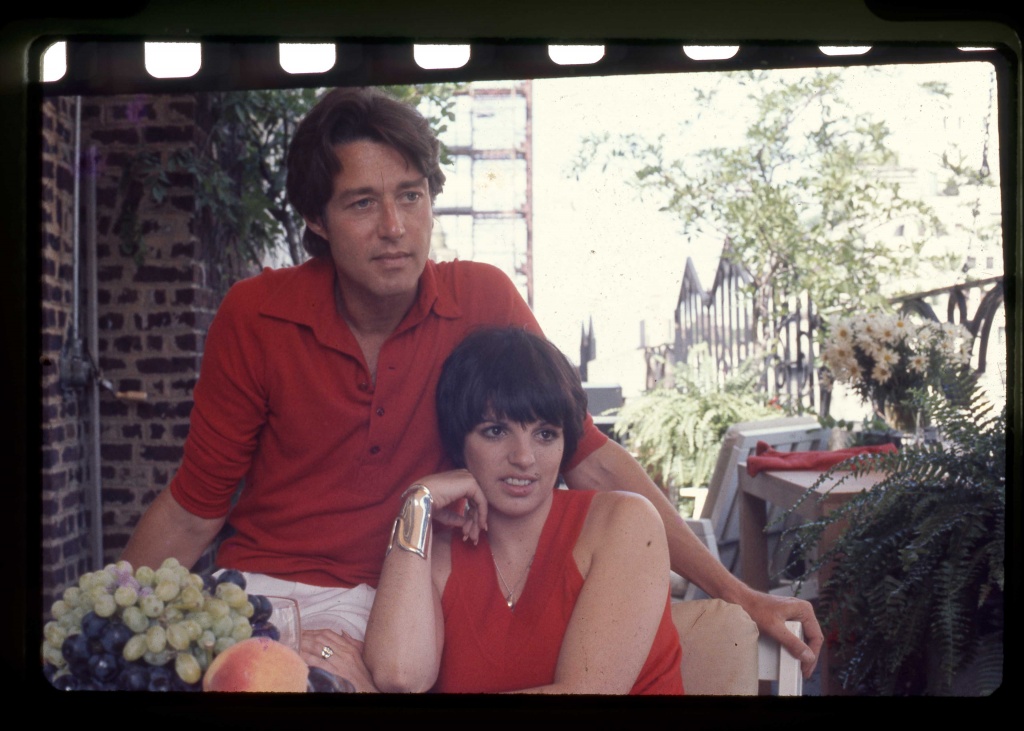Out gay filmmaker Frédéric Tcheng has been making documentaries about fashion for more than decade. He had written, directed and/or edited “Valentino: The Last Emperor,” “Diana Vreeland: The Eye Has to Travel” and “Dior and I.” Tcheng’s latest film, “Halston,” opening June 7 at the Landmark Ritz at the Bourse, presents the American designer as told through film clips, archival footage and interviews with friends, enemies, and family members.
Tcheng’s film has a fictional narrator (Tavi Gevinson) who chronicles the lows and highs of Halston’s career, telling the story of how the Midwesterner became a milliner at Bergdorf Goodman’s — a designer who staged a fashion show at Versailles, and then became a household name with successful launches of perfume and other goods. Halston’s career also involved partying at Studio 54, friendships with Liza Minelli and an entourage of models, as well as a savvy business deal with the Norton Simon empire. Unfortunately, it ran into trouble after a deal with JCPenney, some drug use and other issues best left to be discovered.
Featuring nearly 2000 striking photographs, film clips and footage of his life, work and clothing, “Halston” nimbly depicts the designer’s experiences and questions Halston’s hubris. Tcheng spoke with PGN about his fabulous new film.
PGN: What was your opinion of Halston before you made this film?
FT: My idea of him was from his Studio 54 years and this image of an almost Hollywood version of what a fashion designer is. I couldn’t relate to it, but when Roland [Ballester, the film’s producer] insisted and I read about him, I discovered the other Halstons — the earlier Halston, and the Halston who lost control of his company in 1983-84. I’m fascinated by Americans who reinvent themselves at every turn. I started peeling the onion making this film.
PGN: What was your strategy in creating a narrative of his life through the eyes of others?
FT: You have as many Halstons as you have people who talk to you about Halston. I was inspired by “Citizen Kane,” which inherently portrays a person with the knowledge that there is a part of that person you will never be able to explain completely. I try to get the personality of the interviewee to shine in. I liked the ensemble aspect and portraying a group of people — getting the feeling of Karen Bjornson arriving from the Midwest knowing nothing and Pat Cleveland being discovered on the subway. It’s interesting, and it creates a bigger narrative.
PGN: The film addresses Halston’s sexuality in various key moments of his life and career. How do you think his sexuality hurt or helped him in the eras when he was popular?
FT: I think it was important, and it helped me understand, especially in the 60s, what might have been in his head — his decision to leave Bergdorf’s and start his own company and what that company would be. There was a glass ceiling for gay people and people not from high society. In the business story [depicted in “Halston,”] there was always a veiled homophobic vibe to what the businessmen were saying — the choice of words: he’s “fussy,” or “too Hollywood,” and pinky throws to me were clues of larger worldviews. It’s conservative vs. liberal. There is a political aspect to it. Halston was strange in the way he approached sexuality. He was never “out” out, but it wasn’t something he was actively hiding. He broke new ground in fashion and diversity and sexuality. It was a generation that didn’t talk about things. There was a tacit understanding. Valentino was the same way.
PGN: Your film suggests that it was hubris, greed and ego that caused Halston his downfall. Your film doesn’t judge, so I’m curious to get your observations about his life and career?
FT: That’s the rosebud of the story. Who am I to say? Halston could tell us, but he’s not here. At some point, Lesley [Frowick], his niece, said they watched “The Karen Carpenter Story,” and he turned to Lesley and he said, “If I had to do it all over again, I would make some different choices.” Lesley smiled, but didn’t ask what those would be. I’m not the one to suggest what he thought. I just probe and see what the people close to him think. As much as we are all fascinated with the cause of the downfall, I tried to also show in the film that yes there is a downfall, but it was preceded by the highest highs of American fashion history. You can’t dissociate one from the other. He took the risk at every turn. He was great because he did JCPenney. It might not have been a success, but he was reaching into the future and doing things that people take for granted now. I like that about Halston. I don’t want him to be a victim of his own fate. He made conscious decisions that amounted to an incredible life.
Visit annacrusis.org or pgmc.org for more information.

